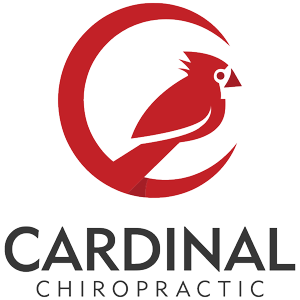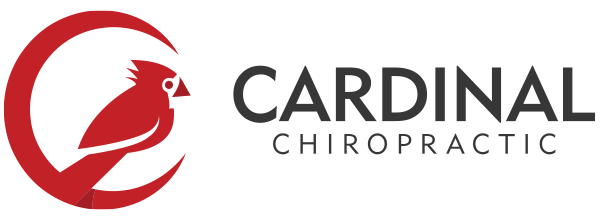Slip and falls are a common injury. Slipping on ice, slipping on a hardwood floor while wearing socks, slipping on a wet slippery floor, slipping on loose gravel, etc. At one time, we have all slipped and fell on our rear end. When you fall as a child it’s usually no big deal and you get up and continue with whatever activity you were doing. Falling as an adult is a different story.
Recently, I fell down a few stairs while wearing socks on a wooden staircase. It was only a few stairs, but I landed right on my “keaster”. I hadn’t fallen like that since I was a kid and I was shocked when it happened. I sat there for a few minutes taking stock. My son came up to ask if I was OK. I replied “I think so.” I still wasn’t quite sure. He asked “then why are you just sitting there?” My response was “because I’m old”.
I literally needed a moment to make sure I wasn’t hurt. Lucky for me I wasn’t. Unfortunately for many, the opposite is true. And even more unfortunate, a land on your bottom can often injure your tailbone. If you have ever injured your tailbone you know it. It’s not fun.
I remember when I was a kid my mom fell right on her bottom and injured her tailbone. She was helping me on my paper route and I felt so bad that she hurt herself while helping me. She had a hard time walking and sitting for a few weeks after that. I didn’t know what a chiropractor was in those days. Had I known, I would have told her to see one.
Tailbone Injury symptoms
Tailbone injuries, also known as coccyx injuries, can cause various symptoms. Common signs and symptoms of a tailbone injury include:
1. Pain and tenderness: You may experience pain and tenderness in and around the tailbone area, which is located at the base of the spine.
2. Pain worsens with sitting or pressure: Sitting or applying pressure to the tailbone area may exacerbate the pain. Activities like sitting for prolonged periods, leaning back, or sitting on hard surfaces can be particularly uncomfortable.
3. Bruising and swelling: Some tailbone injuries can result in bruising and swelling in the affected area.
4. Difficulty or discomfort with bowel movements: Tailbone injuries can make bowel movements painful or uncomfortable due to the proximity of the injury to the rectum.
5. Pain during certain activities: Activities that involve movements that put pressure on the tailbone, such as bending or leaning backward, or activities like cycling or horseback riding, may cause increased pain.
6. Pain during sexual intercourse: Some individuals with tailbone injuries may experience pain or discomfort during sexual intercourse, especially positions that put pressure on the tailbone.
X-rays
In cases of suspected tailbone injury, X-rays are not typically necessary unless there are additional concerning symptoms or if the pain persists for a prolonged period. Most tailbone injuries can be diagnosed based on the symptoms and a physical examination by a healthcare professional.
However, there are instances where X-rays may be recommended:
1. Severe pain or trauma: If you have experienced a significant injury or trauma to the tailbone, an X-ray may be performed to rule out fractures or dislocations.
2. Prolonged or worsening pain: If the pain persists for an extended period or worsens over time despite conservative treatments, an X-ray may be ordered to assess the extent of the injury or to look for any underlying causes of the pain.
3. Other concerning symptoms: If you have symptoms such as neurological changes, bowel or bladder dysfunction, or signs of infection, X-rays may be necessary to evaluate the condition further.
Ultimately, the decision to get an X-ray for a tailbone injury is best made by a healthcare professional based on your specific situation and their clinical judgment.
There are remedies you can do at home and with a chiropractor to
help relieve the symptoms of a tail bone injury.
You don’t have to suffer.
Donut Pillow
A donut pillow, also known as a coccyx cushion or ring cushion, can be helpful for individuals with tailbone injuries or pain. It is a specially designed cushion with a hole or indentation in the center that helps relieve pressure on the tailbone when sitting.
Here are some benefits of using a donut pillow for a tailbone injury:
1. Pain relief: The open center of the donut pillow helps alleviate pressure on the tailbone, reducing pain and discomfort while sitting.
2. Proper weight distribution: The cushion’s design promotes even weight distribution, which can help prevent additional stress on the injured tailbone.
3. Postural support: Donut pillows can help maintain a more upright and ergonomic sitting posture, which can be beneficial for individuals with tailbone injuries.
4. Versatility: Donut pillows can be used in various settings, such as at home, in the office, or while traveling. They are typically portable and easy to carry.
When using a donut pillow, it’s important to position it correctly. Sit directly on the open center of the cushion, allowing the tailbone to be suspended rather than bearing weight on it. This can help provide relief and support while sitting.
While a donut pillow may help with pain management, it’s still recommended to consult with a healthcare professional for a proper diagnosis and guidance on treatment options for your tailbone injury.
Chiropractic Adjustments
Chiropractic care can help individuals with a tailbone injury, as chiropractors are trained to assess and treat musculoskeletal conditions, including injuries to the spine and pelvis.
Chiropractic treatment for a tailbone injury may involve:
1. Evaluation and diagnosis: A chiropractor will conduct a thorough examination to assess the extent of the tailbone injury and identify any misalignments or dysfunctions in the surrounding areas.
2. Manual adjustments: Chiropractors often use manual techniques to correct misalignments or imbalances in the spine and pelvis. In the case of a tailbone injury, they may apply gentle adjustments to help restore proper alignment and relieve pressure on the affected area.
3. Soft tissue therapy: Chiropractors may also utilize soft tissue techniques such as massage, stretching, or myofascial release to address muscle tension or tightness around the tailbone region.
4. Therapeutic exercises: Tailored exercises and stretches may be prescribed to improve flexibility, strengthen supporting muscles, and promote healing in the injured area.
It’s important to communicate openly with your chiropractor about your tailbone injury, symptoms, and any concerns you may have. They will consider your specific situation and tailor the treatment plan accordingly.
However, it’s worth noting that not all tailbone injuries may be suitable for chiropractic care. Severe fractures or dislocations may require more specialized medical attention. Your chiropractor will be able to determine if your injury requires further attention.
Home Care
When dealing with a tailbone injury, it’s important to be mindful of your movements and take steps to minimize pain and discomfort. Here are some general guidelines for movement with a tailbone injury:
1. Avoid prolonged sitting: Sitting for long periods can put pressure on the tailbone and exacerbate pain. Take regular breaks to stand up, walk around, or change positions.
2. Use cushioning: Consider using a donut pillow or a cushion with a cutout or indentation in the center to alleviate pressure on the tailbone when sitting.
3. Sit on a firm surface: While sitting, choose a firm surface rather than a soft or plush one. A firm surface provides more support and stability for the tailbone.
4. Practice good posture: Maintain an upright posture while sitting, keeping your weight evenly distributed. Avoid slouching or leaning back, which can strain the tailbone.
5. Gentle stretching: Perform gentle stretching exercises to help relieve tension and promote flexibility in the muscles surrounding the tailbone. Consult with a healthcare professional or physical therapist for appropriate stretches for your specific condition.
6. Modify activities: Modify or avoid activities that put direct pressure or strain on the tailbone, such as cycling, horseback riding, or exercises that involve sitting on hard surfaces.
7. Gradual return to normal activities: As your tailbone injury heals, gradually return to your normal activities. Start with low-impact exercises and gradually increase intensity and duration as tolerated.

